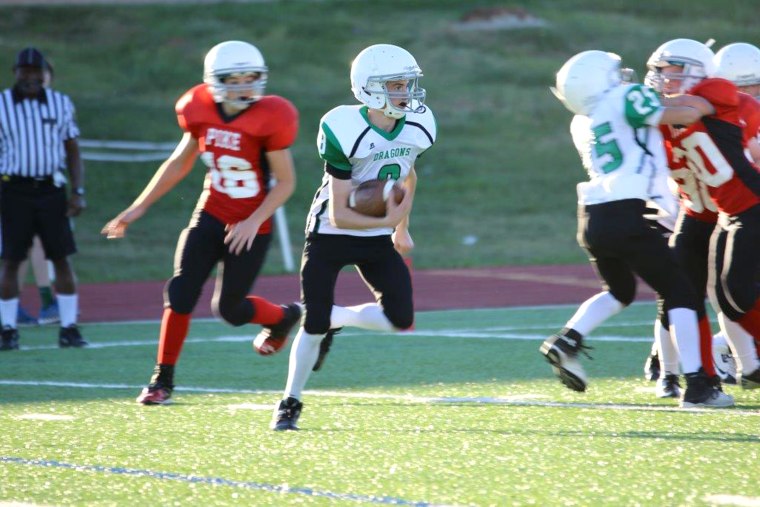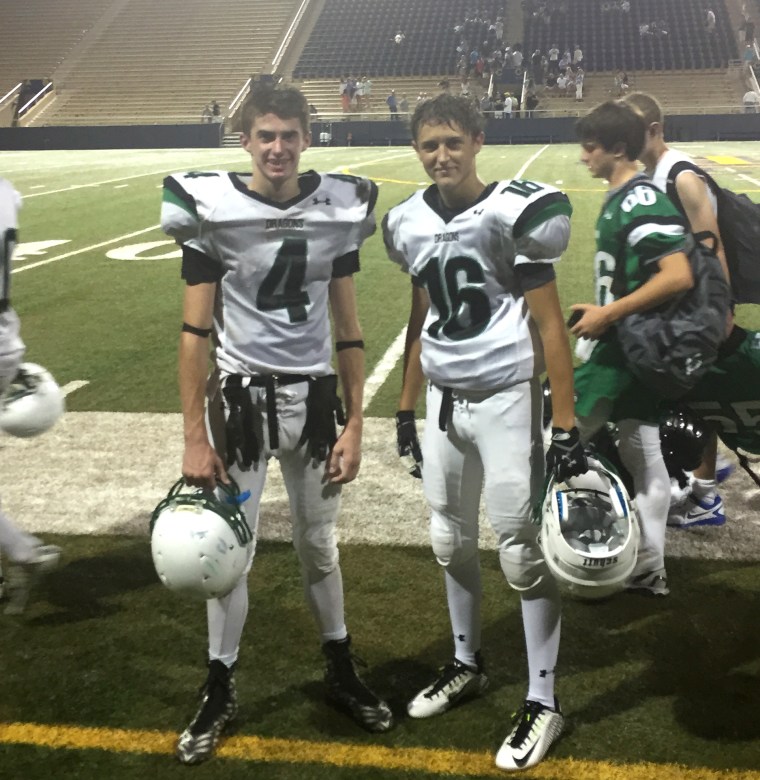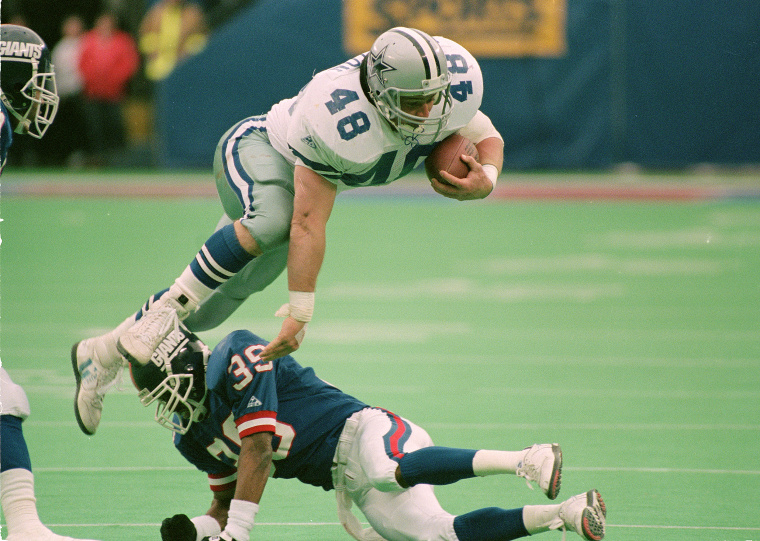SOUTHLAKE, Texas — New numbers show a decline in participation in high school football across the country, and a dimmer future even in the state where the Friday night lights burn brightest — Texas.
While high schoolers playing organized sports climbed to almost 8 million in the past school year, those joining football squads continued to steadily decline, according to data released today by the National Federation of State High School Associations. Football participation peaked in American high schools in the 2009-2010 school year at 1.1 million players. That was less than two years after stories first emerged about the tragic toll of concussions in the sport.
Since then, the number of kids playing high school football has fallen 7 percent, and the decline has accelerated during the past two years. During the school year ending in spring 2018, participation fell in 40 states.

In Texas, the number of kids playing high school football has fallen 2 percent since its peak in the 2010-2011 school year.
For young Walker Southern, the decision to quit the sport came during his freshman year at Carroll High School, a gridiron powerhouse just outside Dallas. An undersized but speedy defensive end from a football-loving family, an especially hard hit on the last play of a game left him dazed.
"I sat up and I was seeing stars a little bit," he recalled. "And I just felt like something was off. This wasn't just a normal hit."
Headaches and trouble sleeping turned into problems with concentration and sluggishness in the classroom.
Said Southern, "I just felt slower than normal, like, someone would say something, and it'd take me a little bit longer to process it.
But it was when his parents took him to the doctor for concussion testing that things changed drastically.
"When you sit there and the doctor's doing the test and he's having a hard time repeating back basic numbers," said Walker's father Chris Southern, "I mean, that's certainly eye-opening as a parent. [You] sit there and say, 'This just got real.'"

Football is still the most watched televised sport in the country, and in Texas, high school football stadiums can be as big as college stadiums in other states. Entire towns turn out for high school games. In a few states, the number of kids playing is still increasing — sometimes even when the overall enrollment, as in Louisiana, is flat.
In Texas, the number of kids playing also increased slightly in the last two school years — but less than 1 percent, and that's in a state where total high school enrollment has grown an average of nearly 2 percent a year for the past 30 years, and is now growing faster than all but four other states.
Not far from Walker Southern's high school, a former Dallas Cowboys running back says he thinks people have used increased awareness of head injuries and chronic traumatic encephalopathy (CTE), a degenerative brain disease sometimes found in veteran football players, to malign the sport. He says that because of the publicity he's not surprised the decline in youth participation has even reached the heartland of youth football.
Said Daryl Johnston, "Somebody did declare war on the game of football about eight years ago, so I think your numbers are probably right in line with that."
Johnston, 52, won three Super Bowls with the Cowboys during an 11-year career that ended in 1999. Now a broadcaster, he said sport is much safer than when he played.
"Football has never been safer than it is right now. It's so much safer than when I played. The equipment is better, the rules are better."
NBC News also talked to some coaches who have limited the contact drills for kids during practice.
'Worth the risk?'
There are still kids eager to play football in the Dallas area, there just aren't as many.
Glenda White, who runs a local youth sports program called the ACA Optimist Club, said she used to have twice as many players in her club's football league for pre-teens.

Part of it is specialization, she says — kids who once played three or four sports now focus on one. But she also knows that when parents go on the internet, "all they see is concussions and football."
"Moms and dads are scared," said White, but she wonders if they have all the facts. "The concussions are not coming at four, five, six, eight years old. They are coming at junior high. They are coming at the senior high level."
In the end, Walker Southern, with the help and support of his family, decided to switch from football to lacrosse. He felt that continuing with football would be taking a risk that was just too high.
"Is it really worth the risk?" asked his father Chris. "You know for us, it wasn't. And fortunately, he was insightful enough to make the decision on his own."
Johnston says he doesn't want a Texas tradition to die. What matters, he says, "is not just the guys playing the game, but these small towns — the communities — what Friday nights are to them and the game of football."
"It would be a shame to see that start to go away."